How Did Benito Mussolini Die?
Sometimes the death of a man has the power to move us, to make us stop what we’re doing, and to contemplate our common humanity and the cruelty of fate. At other times, however—and we have to be honest about this—it can make us feel contented, perhaps even happy.
The death of Benito Mussolini on April 28, 1945 was one of those latter occasions. “A fitting end to a wretched life,” the New York Times declared, and there were few, either inside or outside of Italy, who disagreed. “The man who once boasted that he was going to restore the glories of ancient Rome,” wrote the Times, "is now a corpse in a public square in Milan, with a howling mob cursing and kicking and spitting on his remains.” Indeed, the scene was grisly: the bodies of Mussolini and his mistress Clara Petacci dangling upside down by their heels in front of a gas station in Milan’s Piazzale Loreto.
Mussolini’s “road to Milan” was a long one, filled with strange twists and turns. At one time, he had been one of the most celebrated statesmen in the world.
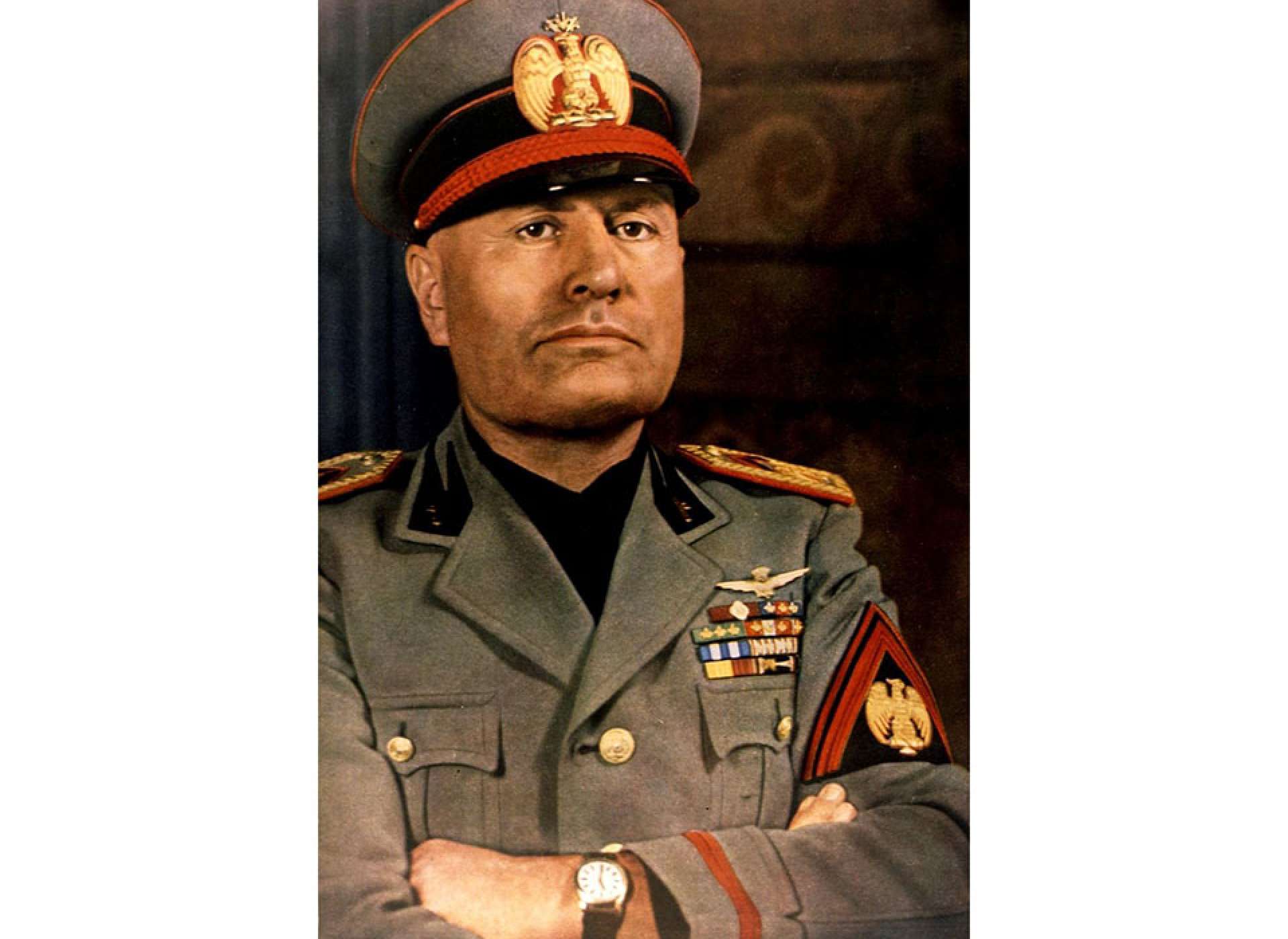
The Duce in happier times.
A strongman who had seized power in Italy in 1922, then in the midst of its post-World War I troubles, he had restored order, ended partisan squabbling, and built Italy up into a respected military power. He called himself the Duce, from the old Latin word dux (“chief” or “boss”). He had a party behind him, of course, the Fascists, and he could call on squads of tough guys in blackshirt uniform (Camicie Nere) to beat down his opponents.
A detailed structure of fascist rule existed on paper, with a Grand Council to which the government was supposed to report and a Chamber of Deputies which made law, but in fact Italy was Mussolini's personal playground, and his own power nearly absolute. Rather than Fascism, it’s probably better to think of Italy in those days as being under the rule of mussolinismo: “Mussolini-ism.”
Whatever you call him, Mussolini cut an incredible public figure in the 1930’s: strutting on the balcony of the Palazzo Venezia in comic opera style in front of 100,000s of people chanting “Duce! Duce!” He built up an elaborate cult of personality around himself. News photos regularly showed him in a position of command, riding on horseback, flying an airplane, or driving a high-performance race car. He would strip to the waist to address farmers in the hot sun or pose wrestling with a lion cub. Stories circulated in Italy to reinforce the image.
The Duce, it was said, could recite cantos of Dante from memory. He worked all night in his office (and the office lights were cleverly left on so that Italians could imagine him hard at work at 4:00am). American razor blades, it was said, were inadequate to cut his tough beard. It was even forbidden to publish a picture of him smiling or to print the word DUCE in anything but uppercase letters. A simple slogan summed it up: “Il DUCE,” the Italian people were told, “ha sempre ragione!” (“The Duce is always right!”).
Yes, there were achievements of a sort. In February 1929 he signed a Concordat with the Vatican, the Lateran Treaty, which brought to an end the hostility between the Church and the Italian government that dated back to 1870, when the Italian state had seized the Papal States. The Concordat was a popular move in Catholic Italy, and a plebiscite in May gave Mussolini 98% of the vote. The stagnant economy received a great deal of attention, with a number of well-publicized public works projects to create jobs, including a huge effort to drain the Pontine Marshes outside of Rome.
The economy was based on a system he called corporatism: Italian economic life was organized into 22 corporations, representing all industries in a major area of production, like agriculture or metallurgy, from raw materials through production to distribution. Containing both labor and management, their task was to negotiate labor settlements. If they couldn't, they submitted to binding government arbitration. Order was restored to Italian economic life, and old days of strikes and factory occupations were ended. The Duce, many said, “made the trains run on time.”
But of course, almost all of this was mythological—unreal! The abolition of unions and the loss of the strike weapon were devastating blows to Italian labor, from which management clearly benefited. At the same time, the corporative structure allowed the Mussolini regime to direct the nation's economic life and make decisions about production and distribution that were normally in the hands of the industrialists.
In general, it was this loss of freedom that best describes the bargain the Italian people had made with Mussolini. They surrendered their liberty in return for the appearance of stability and order. Fascist Italy was, or at least claimed to be, a totalitarian society, in which the state had complete control over the lives of its citizens. Your leisure time was overseen by a party organization called the Dopolavoro, and your children had no choice but to join the Young Fascists.
Unlike traditional dictatorships, which demanded passive obedience, Mussolini’s total state demanded constant involvement, even enthusiasm, for the regime. And if you failed to look enthusiastic enough or failed to conform in any number of ways, there was an all-seeing secret police force, called the OVRA, lurking in the background, arresting, beating, and killing opponents of the regime. In the end, the once-free citizen now had no choice but to follow the regime’s slogan: “Credere, Obbedire, Combattere”—“Believe, obey, fight to defend the state!”
It was in the realm of foreign policy that Mussolini eventually met his doom. One of the new regime's primary goals was to win military glory for Italy, to restore Italy to the grandeur of ancient times. Mussolini spoke incessantly about recreating the Roman Empire. He referred to the Mediterranean Sea, as the Romans had, as Mare Nostrum—“our sea.” He reminded Italians of their “imperial destiny” and revived the old stiff-armed Roman salute. His claims extended to all lands inhabited by Italians, for example in the French districts of Nice, Savoy and Corsica, or the South Tyrol in Austria. These lands, he said, were Italia irredenta—“unredeemed Italy.”
Like the other Great Powers, he also wanted to create a colonial empire in Africa, looking especially to the East African kingdom of Ethiopia. He rattled sabers against his neighbors constantly, but he also did more than talk, greatly expanding the army, building up a gigantic fleet (the Regia Marina), and equipping a powerful air force (the Regia Aeronautica), hugely expensive projects for a land like Italy, which was almost totally devoid of the necessary raw materials.
His neighbors, even Great Powers like France and Britain, took both Mussolini’s new force and his constant warlike posturing very seriously, indeed. British war plans in the 1930’s, in fact, flirted with abandoning the entire Mediterranean to Mussolini in the event of a conflict, so worried were the British that they could not resist his attacks. Indeed, worry about Mussolini was one of the principal stumbling blocks that kept the British and French from taking a harder line against Hitler in the 1930’s.
Growing closeness to Hitler was a kind of fatal embrace for Mussolini.
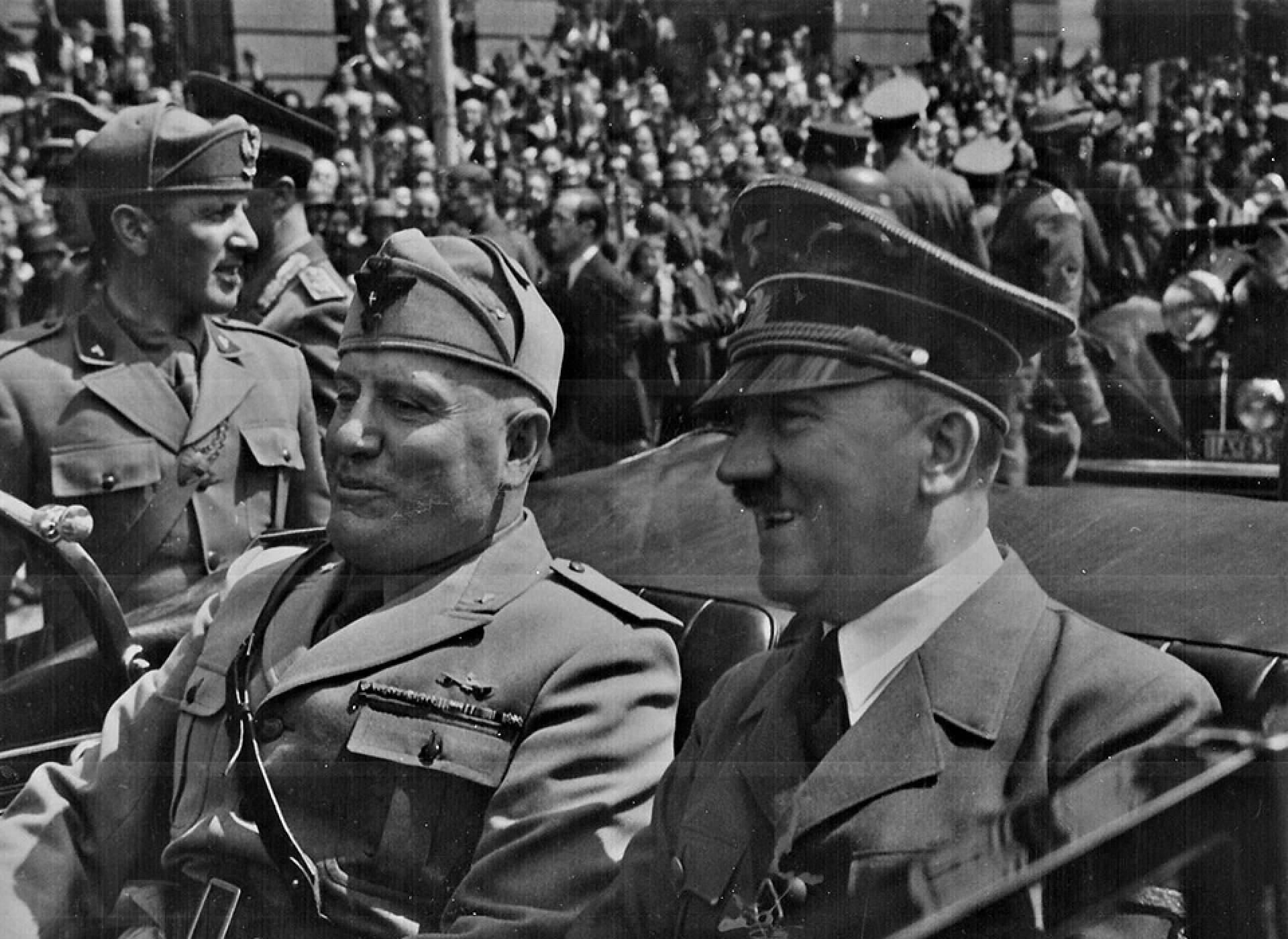
The Duce and the Führer.
In June 1940, with German armies running riot all over Europe, the Duce decided to strike. He declared war on France and Britain in June 1940. No more posturing now: this was the real thing, when all that hard work and money he had lavished on the Italian military would bear fruit and show the world that he had created a new kind of Italian: a warrior as of old.
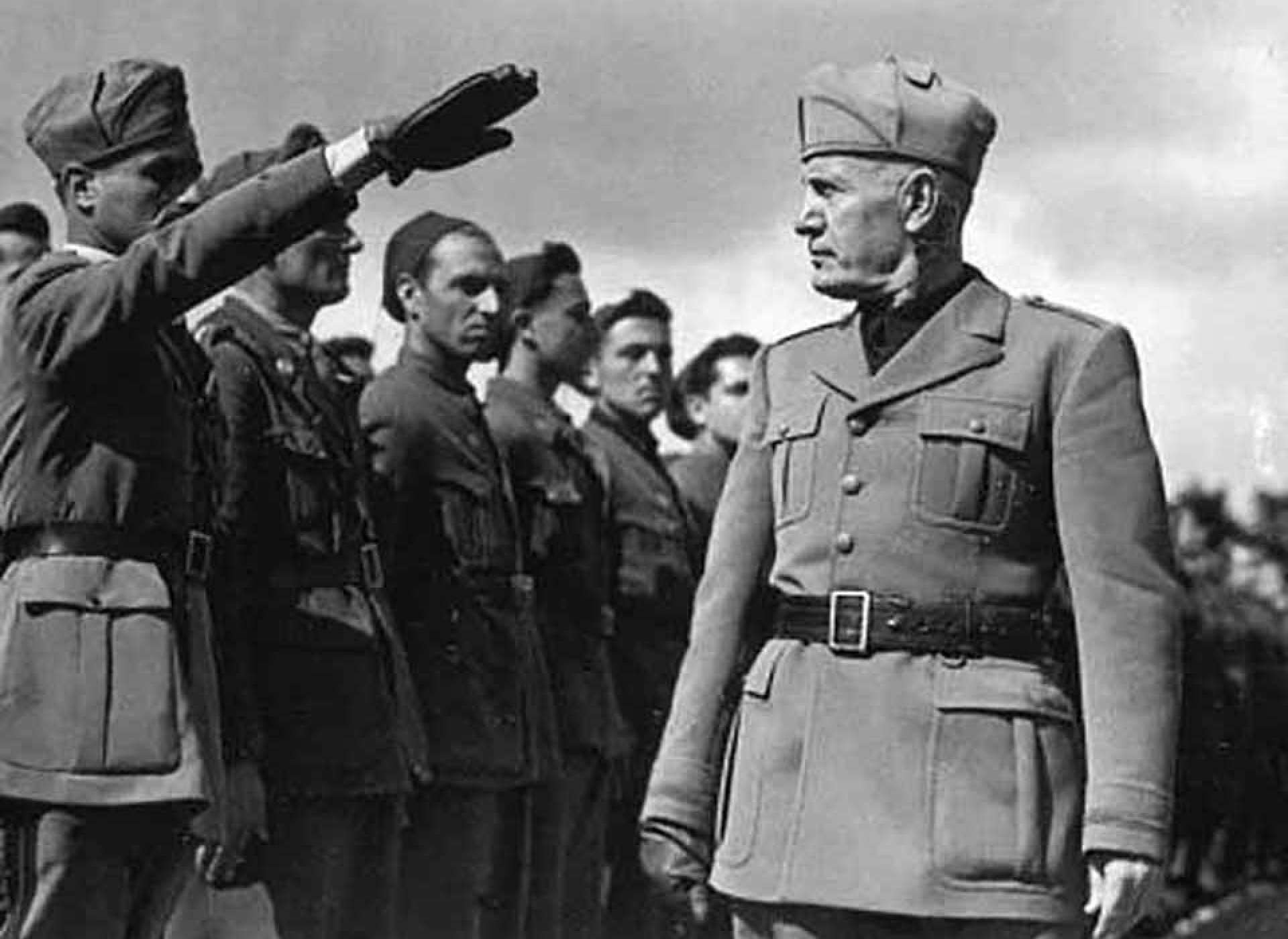
Mussolini Inspecting the Troops.
Well, it didn’t quite work out that way, as everyone knows. In fact, Mussolini’s decision to join Hitler’s war led Italy into an unprecedented series of military disasters. Consider this quick summary. Italy entered the conflict in June 1940, declaring war on an already beaten France and launching an invasion of the Savoy region. The French—disintegrating all over the map—stopped the Italians cold.
Then, in September, an Italian army of 130,000 men under Marshal Rodolfo Graziani invaded Egypt from the Italian colony of Libya. After advancing 50 miles, Graziani halted at Sidi Barrani in order, he said, to begin construction of a paved supply road back to Libya, something that would have taken months even under peacetime conditions. He was still 80 miles away from the main British position at Mersa Matruh! As that adventure ground to a halt, in October 1940, the Italian army invaded Greece from the Italian colony of Albania.
Not only did they fail to conquer tiny Greece, the Greeks counterattacked, drove the Italians back across the Albanian border, and for a time threatened to destroy Mussolini’s army altogether. Even worse, Great Britain now sent forces to Greece to oppose him. The next month, in November 1940, the Italian fleet was caught at anchor at Taranto by British torpedo bombers. One battleship was sunk and two more disabled, neutralizing the Italian surface navy for the rest of the war.
Finally, in December, a British force under General Richard O’Connor attacked Graziani at Sidi Barrani. O’Connor had only 30,000 men, but he planned his attacks skillfully. In the early morning, an end-run round the Italian southern flank by the 4th Indian Division achieved total surprise, catching the Italians in their beds. As panic spread in their ranks, O’Connor now launched a frontal assault by 7th Armoured Division, the famed “Desert Rats.” Graziani's entire army was routed, sent into headlong retreat across the desert, pursued, caught, and destroyed at Beda Fomm in February 1941. Fairly or unfairly, the Italian military has come to be synonymous with wartime ineptitude.
Mussolini led Italy, alright: he led it straight into disaster. After the Allies invaded North Africa in late 1942, war came to Italy’s doorstep. First it was bombing raids on Italian cities, which possessed only rudimentary antiaircraft defenses. Then came actual invasion, of Sicily in July 1943 and the Italian mainland in September. The former led to Mussolini’s overthrow and imprisonment; the latter to the surrender of Italy, even though German troops soon occupied the entire country and carried on the fight against the Allies from Italian soil. “Surrendered” Italy would experience twenty more months of high intensity combat—a war that devastated countryside, cities, and civilian population alike. To be sure, Italy paid a steep price for Mussolini.
The story might well have ended here, but in September 1943 the Germans staged a daring commando raid on Mussolini’s “prison”—actually the Hotel Campo Imperatore on the Gran Sasso massif. A mixed force of SS and paratroopers under Otto Skorzeny carried out a high-risk glider raid, overcame Mussolini’s guards, and spirited him off the mountain.
Whatever he might once have been, he was now a German puppet, beholden to Hitler for his very life. He was placed in charge of a newly established Italian Social Republic in the north (sometimes, for the small town on Lake Garda that was its seat of government, called the “Republic of Saló”). It was never anything more than a German satellite state, and it did German bidding, rounding up and shooting anyone associated with the thriving anti-Axis partisan movement. The Republic was also a shrinking asset, as the grinding Allied march northwards steadily reduced its influence and the territory it controlled.
And that brings us back to where we started: that ill-fated gas station in the Piazzale Loreto.
-

The End (April 29, 1945)
-

Mussolini's Mistress, Clara Petacci.
With Allied armies driving north into the Lombard plain and with well-armed partisan bands active everywhere, Mussolini tried to make a run for it. On April 25th, he, his paramour Petacci, a small convoy of bitter-enders, and a handful of German guards left Milan and headed north towards Lake Como on the Swiss border.
Two days into their trek, they were identified by a group of partisans, which was probably inevitable. Mussolini may have been wearing German Luftwaffe kit, but there was no more recognizable face in all of Italy. All of those propaganda posters and photos had now truly come back to haunt him. The next day, their captors brought the pair to the small town of Giulino de Mezzegra on the shores of Lake Como and executed them in a hail of machine gun fire.
Then, the final indignity: the posthumous desecration. The man who had once strutted across the world stage now dangling by his heels, next to his mistress. A maddened crowd howling epithets of hatred and derision. Cursing. Spitting on the corpses. A woman stepping forward and pumping five bullets into his body—“for my five dead sons,” she said. Some of these same folk had probably chanted “Duce! Duce!” once upon a time, perhaps not so long ago. Nonetheless, the sentiments were real, and in Mussolini’s case, utterly deserved.
Virtually every land on earth has a creator figure, a “father of his country”: Charlemagne for the French, Peter the Great for the Russians, George Washington for the Americans. The list of those who wrecked their homeland is shorter. Mussolini is on it, somewhere near the top, rivaled , perhaps, only by Hitler.
In this case, it’s hard to argue with the New York Times: “a fitting end to a wretched life.”
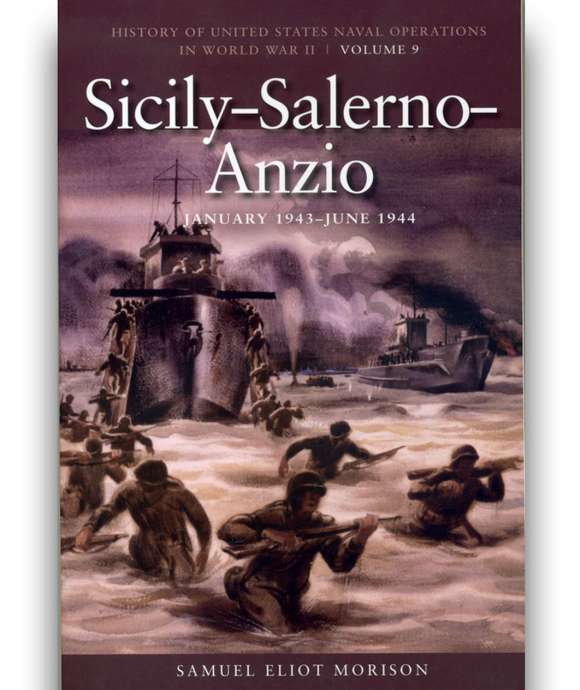
Sicily Salerno Anzio
Support the continuing educational mission of The National WWII Museum by shopping our Museum Store book selection here.
This article is part of an ongoing series commemorating the 75th anniversary of the end of World War II made possible by Bank of America.
Robert Citino, PhD
Robert Citino, PhD, is the former Samuel Zemurray Stone Senior Historian in the Jenny Craig Institute for the Study of War and Democracy.
Cite this article:
MLA Citation:
APA Citation:
Chicago Style Citation:
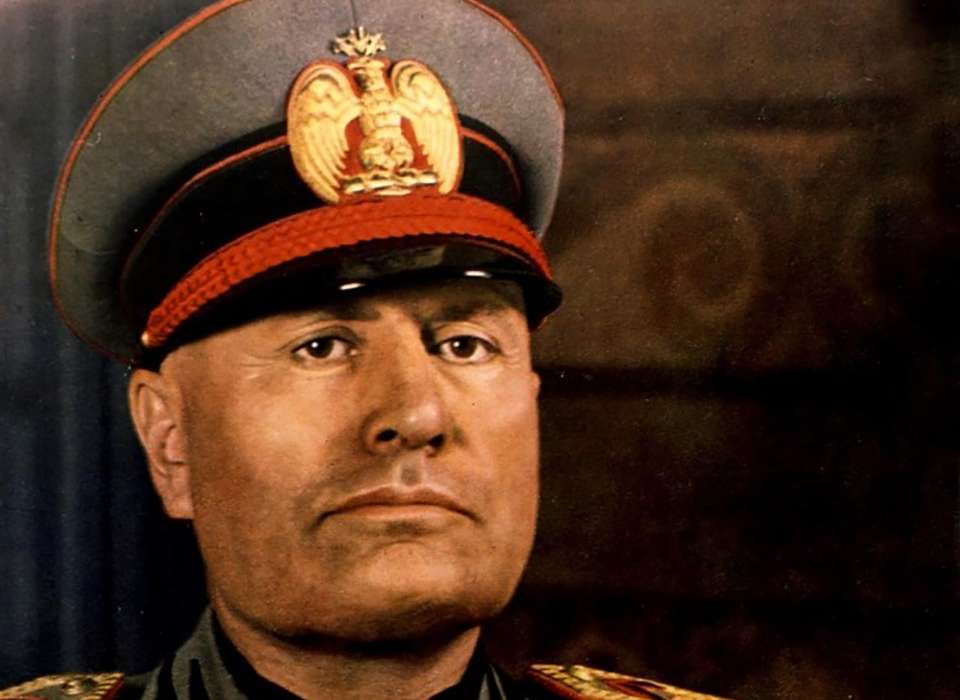
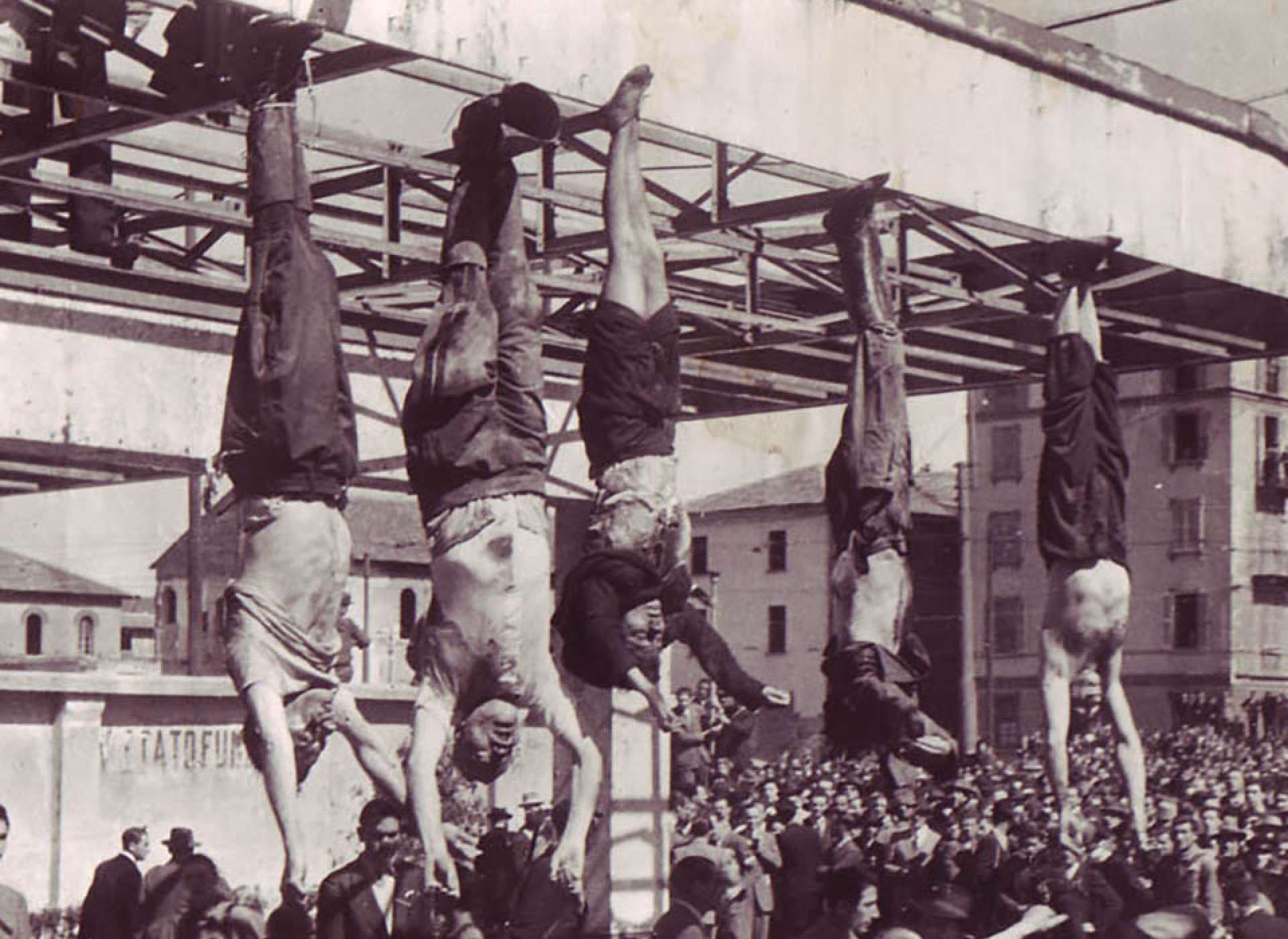
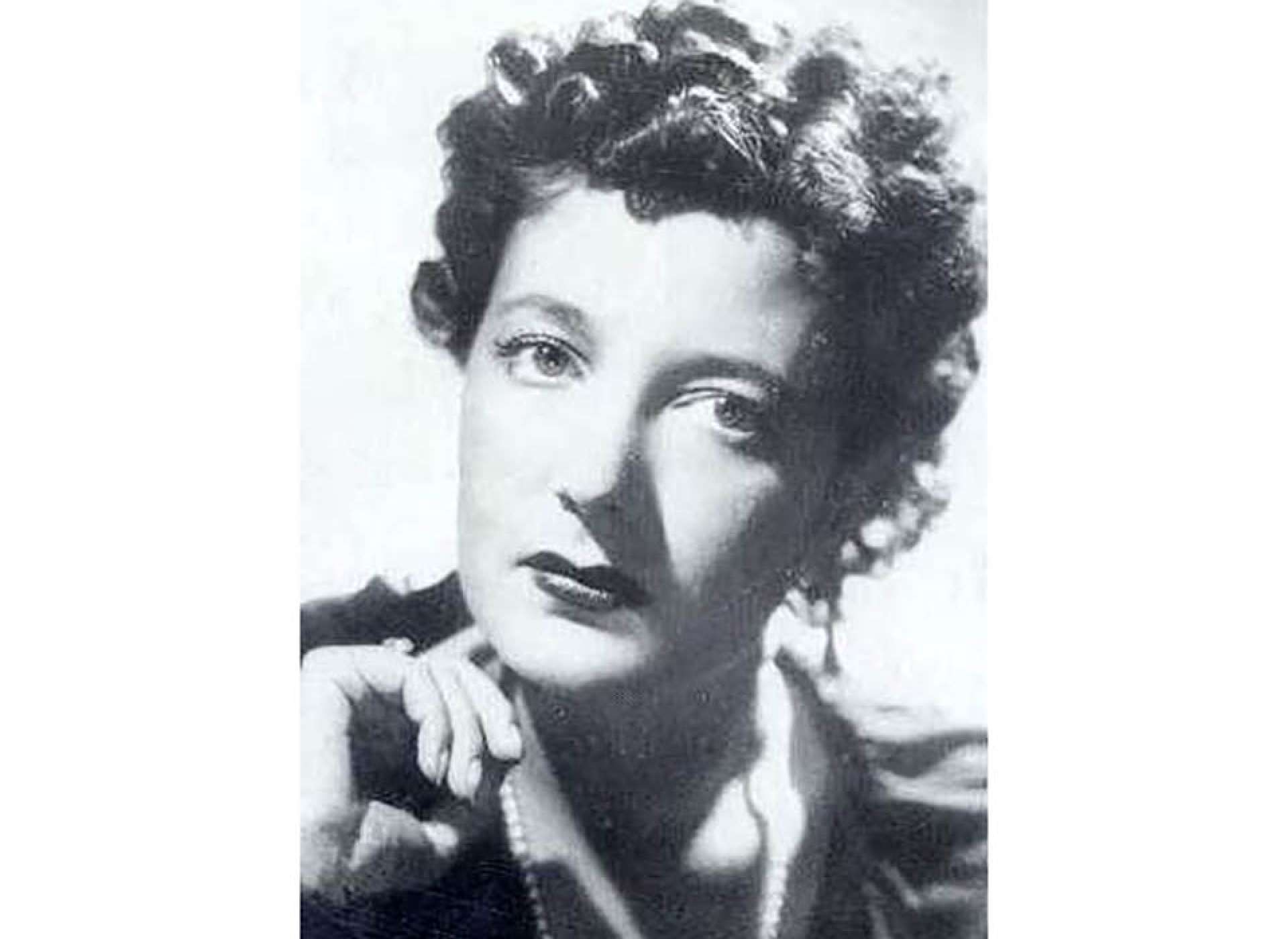





![Max Fuchs, New York City cantor, sings as Rabbi Sydney [sic] Lefkowitz, Richmond, VA, conducts the first Jewish services from Germany.](/sites/default/files/styles/max_650x650/public/2025-10/image1.jpg)



